The 7 Best Freshwater Fish for Low Light Tanks [Hassle-Free Setup and Maintenance]
Published: 30 Jun 2025
Creating a stunning aquarium doesn’t require blazing lights or high-tech equipment. Some of the most beautiful and peaceful freshwater setups thrive under subdued lighting conditions. Whether you’re looking to reduce energy costs, create a calming ambiance, or prefer the natural look of a dimly lit tank, these seven fish species will flourish in low-light environments while requiring minimal maintenance.
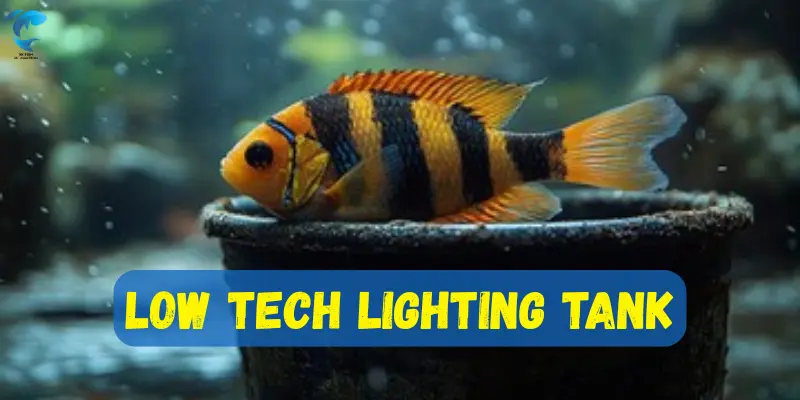
Freshwater fish for low light tanks offer numerous benefits: they help reduce algae growth, lower electricity bills, and minimize stress on your fish. These species thrive in dimmer conditions, allowing you to highlight their natural colors and behaviors. Many low-light fish are nocturnal or crepuscular, meaning they’re most active during dawn, dusk, or nighttime, making them ideal for tanks with minimal lighting.
Understanding Low-Light Aquarium Requirements
Before diving into our fish recommendations, it’s essential to understand what constitutes a low-light setup. Low-light aquariums typically require 0.25 to 0.5 watts per gallon of lighting, which most standard aquarium fixtures naturally provide. The key is using bulbs rated around 6500K (daylight spectrum) while avoiding overly bright or high-intensity lighting systems.
Essential Equipment for Low-Light Tanks
Basic Setup Requirements:
- Standard aquarium hood with bare LED or fluorescent lighting
- A simple sponge filter or hang-on-back filter for gentle water movement
- Heater appropriate for tank size (for tropical species)
- Any substrate (specialized plant substrates not required)
- Plenty of hiding spots: caves, driftwood, rocks, and hardy plants
- Timer for consistent lighting schedule (8-10 hours daily)
Water Parameters:
- Temperature: 72-82°F (varies by species)
- pH: 6.5-7.5 (neutral range works for most species)
- Water changes: 20-30% weekly
- Gentle water flow to distribute nutrients without disturbing the fish.
The 7 Best Low-Light Freshwater Fish
1. Bristlenose Pleco (Ancistrus sp.)
Why They’re Perfect for Low Light: As nocturnal algae-eaters, bristle nose plecos become most active when the lights dim or turn off completely. They naturally prefer shadowy environments and appreciate cave-like hiding spots during daylight hours.
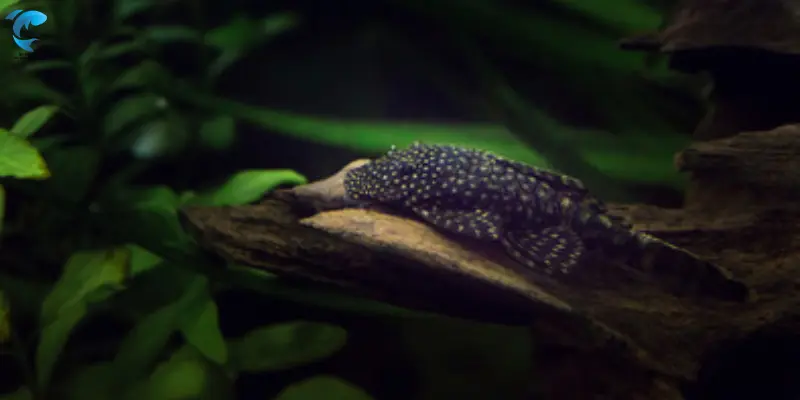
Care Requirements:
- Tank Size: 20+ gallons minimum
- Temperature: 74-80°F (23-27°C)
- pH: 6.5-7.5
- Adult Size: 4-6 inches
- Diet: Algae wafers, vegetables (zucchini, cucumber), driftwood
- Special Needs: Caves and hiding spots; driftwood is essential for digestion
Maintenance Tips: Feed sinking wafers after lights out when they’re most active. Provide multiple hiding spots and ensure good water flow around decorations to prevent them from becoming stagnant. These hardy fish tolerate a wide range of conditions and help keep algae under control Aquarium Co-Op.
2. Kuhli Loach (Pangio kuhlii)
Why They’re Perfect for Low Light: These “miniature eels” are strictly nocturnal, spending daylight hours buried in the substrate or hiding under decorations. They only emerge to forage when aquarium lights are dimmed or off.
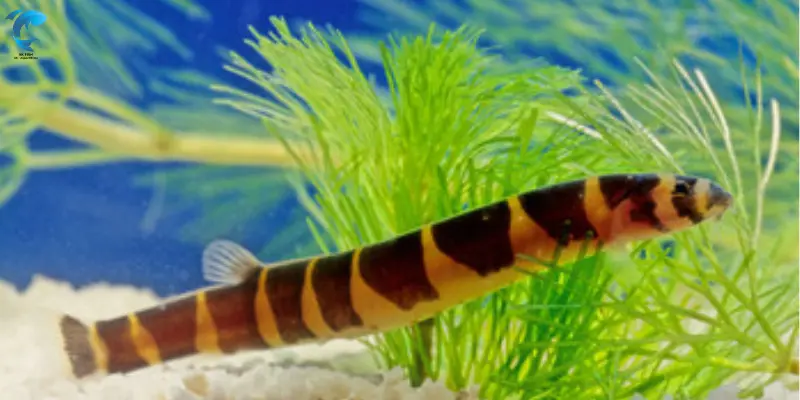
Care Requirements:
- Tank Size: 20+ gallons
- Temperature: 75-86°F (24-29°C)
- pH: 6.0-7.0
- Adult Size: 4 inches
- Diet: Omnivorous; especially loves worms, sinking pellets, and leftover food
- Special Needs: Fine sand substrate; a group of 6+ individuals; plenty of hiding spots
Maintenance Tips: Keep in groups for natural behavior and reduced stress. Use fine sand substrate to prevent damage to their delicate barbels. Feed after lights out and provide multiple caves or PVC pipes for daytime hiding. YourAquarium.co.uk.
3. Glass Catfish (Kryptopterus vitreous)
Why They’re Perfect for Low Light: Glass catfish naturally inhabit areas with dense vegetation and prefer dimmer lighting conditions. Their transparent bodies look particularly striking under subdued lighting, and they’re less stressed in low-light environments.
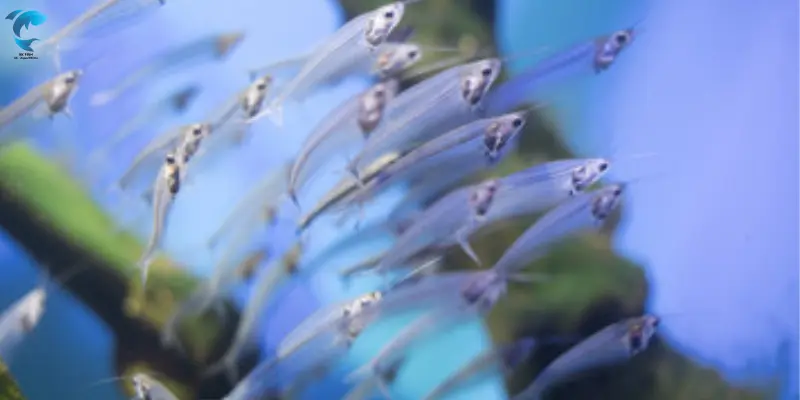
Care Requirements:
- Tank Size: 30+ gallons
- Temperature: 72-82°F (22-27°C)
- pH: 6.5-7.5
- Adult Size: 2.5 inches
- Diet: Small foods like nano pellets, baby brine shrimp, daphnia, quality flakes
- Special Needs: School of 6+ individuals; dense vegetation and hiding spots
Maintenance Tips: These sensitive fish prefer stable water conditions and gentle filtration. Provide plenty of plants and driftwood for security. They’re a peaceful community of fish that appreciate consistent feeding schedules, Aquarium Co-Op.
4. Upside-Down Catfish (Synodontis nigriventris)
Why They’re Perfect for Low Light: This unique species spends much of its time inverted beneath broad leaves or overhangs, naturally seeking darker areas. They’re most active during twilight hours and appreciate dimmer lighting that mimics their natural habitat.
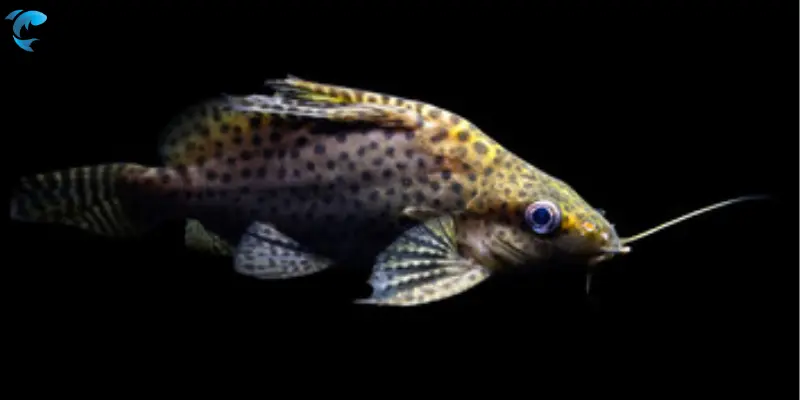
Care Requirements:
- Tank Size: 30+ gallons
- Temperature: 75-82°F (24-27.5°C)
- pH: Around 7.0 (neutral)
- Adult Size: 3-4 inches
- Diet: Krill flakes, freeze-dried brine shrimp, pellets, frozen foods
- Special Needs: Broad-leaved plants; caves; fine substrate; ceramic tunnels
Maintenance Tips: Create plenty of overhead hiding spots by using broad-leaved plants or decorative elements. Use a smooth substrate to protect their sensitive mouths. They’re generally peaceful but may be territorial within their species. YourAquarium.co.uk.
5. Corydoras Catfish (Corydoras spp.)
Why They’re Perfect for Low Light: While not strictly nocturnal, Corydoras are naturally bottom-dwelling fish that appreciate subdued lighting and shadowy areas created by plants and decorations. They remain active throughout the day but are less stressed under gentle lighting.
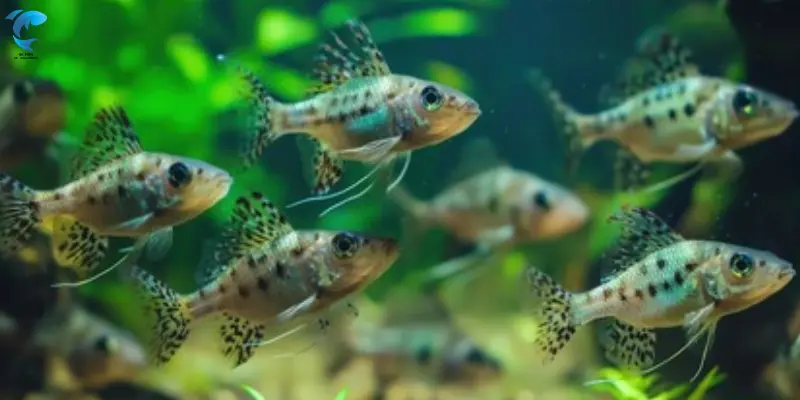
Care Requirements:
- Tank Size: 20+ gallons
- Temperature: 72-82°F (22-28°C)
- pH: 6.5-7.8
- Adult Size: 1-3 inches (species dependent)
- Diet: Sinking wafers, bloodworms, tubifex, varied meaty foods
- Special Needs: School of 6+ individuals; sand substrate preferred; multiple hiding spots
Maintenance Tips: These social fish must be kept in groups and prefer fine sand substrate that won’t damage their barbels. They’re excellent tank cleaners and work well in community setups. Feed sinking foods to ensure they get adequate nutrition.
6. Neon Tetras (Paracheirodon innesi)
Why They’re Perfect for Low Light: Neon tetras’ vibrant blue and red stripes appear more striking under subdued lighting conditions. Their natural habitat includes heavily shaded areas beneath dense canopy cover, making them well-suited for dimmer aquarium conditions.
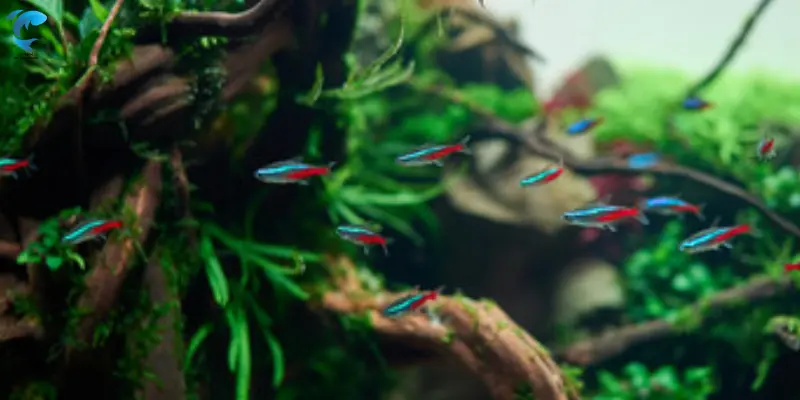
Care Requirements:
- Tank Size: 20+ gallons
- Temperature: 72-78°F (22-26°C)
- pH: 6.5-7.5
- Adult Size: 1.5 inches
- Diet: Small flakes, micro pellets, baby brine shrimp, daphnia
- Special Needs: School of 6+ individuals; soft to medium water hardness; peaceful tank mates
Maintenance Tips: Keep in schools to display natural schooling behavior and reduce stress. Their bright colors pop beautifully in low-light setups with dark substrates and ample plant life. Feed small amounts twice daily.
7. Pictus Catfish (Pimelodus pictus)
Why They’re Perfect for Low Light: Pictus catfish specifically require dimmer lighting conditions and become stressed under bright lights. They’re naturally crepuscular (most active at dawn and dusk) and appreciate the shadowy environment of a low-light tank.
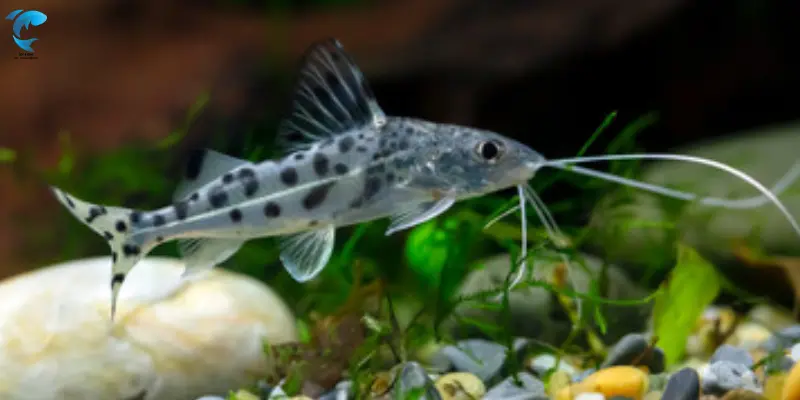
Care Requirements:
- Tank Size: 55+ gallons (need 4+ foot length)
- Temperature: 72-78°F (22-26°C)
- pH: 6.0-8.0
- Adult Size: 4-6 inches
- Diet: Varied meaty foods, pellets, frozen foods, live foods
- Special Needs: Dimmer lighting; hardy low-light plants (Anubis, Java fern); shelter areas
Maintenance Tips: Provide plenty of hiding spots and use hardy, low-light plants that can withstand the active swimming of your pets. They’re peaceful but may eat very small tank mates. Ensure excellent water quality and stable parameters, Aquarium Co-Op.
Creating the Perfect Low-Light Environment
Lighting Setup and Schedule
Optimal Lighting Configuration:
- Use standard aquarium LED or fluorescent fixtures
- Choose bulbs rated at 6500K for natural daylight spectrum
- Maintain 8-10 hours of lighting daily using a timer
- Consider clip-on shop lights with CFL bulbs for budget-friendly options
- Avoid high-intensity planted tank lights unless keeping light-demanding plants
Light Management Tips:
- Create gradual transitions from light to dark (use room lighting as a buffer)
- Position floating plants for additional shading if needed
- Use backgrounds and decorations to create shadowy areas
- Consider red or blue moonlights for nighttime viewing without disturbing fish
Tank Setup for Low-Light Success
Substrate and Decoration:
- Any aquarium-grade gravel or sand works (specialized substrates are unnecessary)
- Add plenty of caves, driftwood, and rock formations
- Include hardy, low-light plants: Anubis, Java fern, Java moss, Cryptocoryne
- Create multiple levels and hiding spots throughout the tank
- Use dark-colored substrates to enhance fish colors under low light
Filtration and Water Movement:
- Sponge filters provide gentle filtration, ideal for low-light setups
- Hang-on-back filters work well for larger tanks
- Maintain a gentle water flow to distribute nutrients without stressing fish
- Avoid high-flow powerheads that can stress shy, nocturnal species
Compatible Tank Mates and Stocking Guidelines
Ideal Community Combinations
Small Community Tank (20-30 gallons):
- 6-8 Corydoras catfish
- 8-10 Neon tetras
- 1 Bristlenose pleco
- 6-8 Kuhli loaches
Medium Community Tank (40-55 gallons):
- 6-8 Glass catfish
- 10-12 Neon tetras
- 8-10 Corydoras catfish
- 1-2 bristle nose plecos
- 1 Upside-down catfish
Large Community Tank (75+ gallons):
- 1-2 Pictus catfish
- 10-12 Kuhli loaches
- 15-20 Neon tetras
- 6-8 Corydoras catfish
- 2-3 bristle nose plecos
Stocking Guidelines
General Rules:
- Start with fewer fish and gradually increase the population
- Maintain 1 inch of fish per gallon as a starting guideline
- Account for adult sizes when planning long-term stocking
- Ensure adequate filtration for bioload
- Monitor water parameters closely when adding new fish
Maintenance and Care Schedule
Daily Tasks (2-3 minutes)
- Check water temperature and equipment function
- Observe fish behavior and health
- Feed appropriate amounts (fish should consume food within 3-5 minutes)
- Remove any uneaten food after feeding
Weekly Tasks (15-20 minutes)
- Test water parameters (ammonia, nitrite, nitrate, pH)
- Perform 20-30% water changes with temperature-matched, dechlorinated water
- Clean algae from the glass as needed
- Remove dead plant matter or debris
- Check filter operation and clean if necessary
Monthly Tasks (30-45 minutes)
- Deep clean substrate using a gravel vacuum
- Trim plants and rearrange decorations if needed
- Check and clean filter media (rinse in tank water, never tap water)
- Inspect equipment for wear or damage
- Add root tabs for planted areas if needed
Troubleshooting Common Issues
Excessive Algae Growth
Cause: Usually indicates the lighting period is too long or a nutrient imbalance. Solution: Reduce lighting period to 6-8 hours; increase water change frequency; add algae-eating fish or snails
Fish Hiding Constantly
Cause: Inadequate hiding spots, water quality issues, or incompatible tank mates. Solution: Add more caves and decorations; test water parameters; evaluate tank mate compatibility
Poor Plant Growth
Cause: Insufficient nutrients or the wrong plant species for low-light conditions. Solution: Add liquid fertilizers or root tabs; choose easier low-light plants like Anubis, Java fern, or Cryptocoryne
Cloudy Water
Cause: Overfeeding, inadequate filtration, or new tank syndrome. Solution: Reduce feeding amounts; upgrade filtration if needed; perform additional water changes
Benefits of Low-Light Aquarium Keeping
Advantages of Fish Health
- Reduced stress: Many species naturally prefer dimmer conditions
- Natural behavior: Nocturnal and crepuscular species display more authentic behaviors
- Enhanced colors: Certain fish show more vibrant colors under subdued lighting
- Improved breeding: Many species breed more readily in dimmer environments
Practical Benefits
- Lower energy costs: Basic lighting uses significantly less electricity than high-tech systems
- Reduced algae: Lower light levels naturally limit algae growth
- Easier maintenance: Fewer lighting-related variables to manage
- Budget-friendly: No need for expensive high-end lighting systems
Aesthetic Appeal
- Calming atmosphere: Dimmer lighting creates a peaceful, natural ambiance
- Enhanced viewing: Fish colors often appear richer under warm, gentle lighting
- Natural appearance: Mimics the dappled light of natural aquatic environments
- Versatile placement: Can be positioned in any room without overwhelming brightness
Conclusion: Creating Your Low-Light Aquatic Paradise
Low-light freshwater aquariums offer the perfect combination of natural beauty, ease of maintenance, and fish welfare. By choosing species that naturally thrive in dimmer conditions—like bristlenose plecos, kuhli loaches, glass catfish, upside-down catfish, corydoras, neon tetras, and pictus catfish—you can create a stunning display that requires minimal lighting equipment while providing optimal conditions for your aquatic pets.
FAQ: Freshwater Fish for Low Light Tanks
While many fish thrive in well-lit tanks, particular species are more adaptable to low-light conditions. Fish that are naturally found in darker, shaded environments, such as the fish that dwell in rivers with canopy cover, are often the best choices. These fish are generally more tolerant of reduced light levels and can flourish without the need for high-intensity lighting. It’s essential to focus on species known for their hardiness and low-maintenance requirements when it comes to lighting, such as bettas, tetras, or catfish.
The most critical factor in a low-light tank is ensuring proper water quality. Without sufficient light, plants may not grow as well, resulting in an imbalance in the tank’s ecosystem. To maintain a healthy environment, ensure you have a reliable filtration system, perform regular water changes, and test water parameters (pH, ammonia, nitrite, and nitrate) consistently. Additionally, low-light tanks require a more careful selection of plants that thrive in low-light conditions, such as Anubias or Java fern, which will help maintain oxygen levels and provide hiding spots for your fish.
Generally, low light will not significantly affect the coloration of most freshwater fish; however, it may have some impact on their vibrancy. Fish that rely on bright lighting for color enhancement, like some types of tetras, may appear less vibrant in a low-light tank. However, many fish, especially those adapted to low-light environments, will maintain their natural coloration regardless of the lighting conditions. It’s essential to choose species known for their hardiness in these conditions to prevent any stress-related dullness in their color.
Choosing the right plants is crucial for a healthy, low-light tank, as they help absorb nutrients and maintain water quality. Look for plants that are specifically labeled as “low light” or “low maintenance.” Examples include Java fern, Anubias, and moss balls. These plants thrive in low-light conditions and can survive with minimal maintenance, making them ideal for beginners or those setting up low-light tanks. It’s also a good idea to avoid plants that require intense lighting or high-intensity setups, as they may not thrive in such an environment.
Yes, it is possible to have a flourishing aquarium with low-light fish and plants. While a low-light environment may require more attention to water quality, it can be a very manageable setup. By carefully selecting low-maintenance fish and plants, such as bettas, guppies, and mosses, you can create a peaceful and beautiful aquarium that requires less frequent maintenance than a high-light setup. The key is to focus on fish and plants that are naturally suited for low-light conditions and ensure that your tank’s filtration and water parameters are well-maintained.

SK Fish is your trusted source for practical fish care tips and delicious seafood recipes. Our team is dedicated to providing reliable, well-researched content for fishing enthusiasts and home cooks alike.

- Be Respectful
- Stay Relevant
- Stay Positive
- True Feedback
- Encourage Discussion
- Avoid Spamming
- No Fake News
- Don't Copy-Paste
- No Personal Attacks



- Be Respectful
- Stay Relevant
- Stay Positive
- True Feedback
- Encourage Discussion
- Avoid Spamming
- No Fake News
- Don't Copy-Paste
- No Personal Attacks
![How to Set Up a Freshwater Fish Tank in 5 Easy Steps [No Experience Needed, Avoid Common Pitfalls] - Post Thumbnail](https://skfish.com/wp-content/uploads/how-to-set-up-a-freshwater-fish-tank-in-5-easy-steps-100x67.webp)
![Discover the Truth: How Long Does It Take for Guppies to Breed? [Expert Tips Inside] - Post Thumbnail](https://skfish.com/wp-content/uploads/guppy-how-to-breed-100x67.webp)



